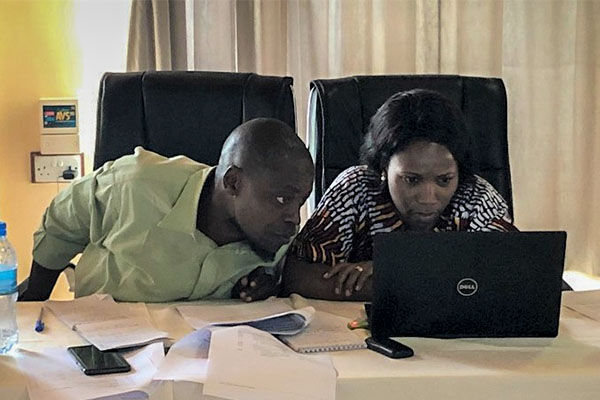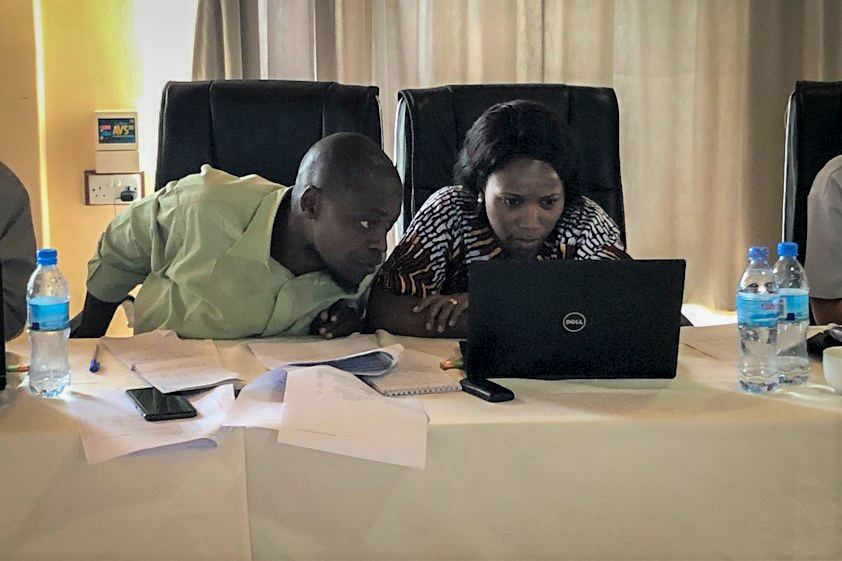
Modeling the Mara
The Mara River is a crucial, at-risk water source for farms, villages and ecosystems in Kenya and Tanzania. Researchers and stakeholders are working together to ensure it is sustainable in the years to come.
The Mara River runs from Kenya to Tanzania, providing water for 14,000 square kilometers of farmland, tea plantations, villages, forests, rangelands, and the richly biodiverse Serengeti and Maasai Mara national reserves.
This critical river – and everyone who depends on it – is at risk, due to climate change and population growth. Agriculture and urbanization strain the river’s water supply and quality, while a changing climate brings an uncertain future.
It’s a complex problem that affects numerous groups and interests. To help address it, SEI and its partners in the USAID-funded Sustainable Water Partnership (SWP) program are mobilizing and training stakeholders to identify workable policies that ensure the Mara remains sustainable in the years to come.
This effort reached an important milestone last month, when the SWP team presented a newly refined model of the Mara River Basin to key governmental and nongovernmental stakeholders. Participants included members of Tanzania’s Ministry of Water and the Lake Victoria Basin Water Board, as well as non-governmental experts from the World Wildlife Fund and the Nile Equatorial Lakes Subsidiary Action Program (NELSAP), a subsidiary program of the Nile Basin Initiative (NBI).
The workshop, which took place in Mwanza, Tanzania, was the latest in a series of workshops that are building capacity around sustainable water management of the Mara basin. Stakeholders are not only learning how to use SEI’s Water Evaluation And Planning (WEAP) software to test out sustainable policies, they are also collaborating with researchers to build a model of the Mara basin that accurately reflects region-specific concerns, uncertainties, and policies. They are gaining ownership of a model that will serve as an important tool in water allocation planning (WAP) and decision-making processes in the region.

SEI utilizes a process called Robust Decision Support (RDS) to assist stakeholders in finding a common understanding of their water resources system, the major uncertainties that it confronts, and possible management strategies that could promote the system’s sustainability. At the Mwanza workshop, researchers utilized this process as they led stakeholders through the procedure of constructing the hydrological model of the Mara basin, and then presented the model’s predictions for future water security on the Tanzanian side of the basin. Participants were able to see how water demands from households, livestock, agriculture, tourism, wildlife, and mining were impacted under various future scenarios.
To supplement the model, participants suggested additional uncertainties to include in the model, such as population growth and land use changes, and brainstormed strategies that could address these uncertainties. Among the suggestions were improving land management, mobilizing good will from all stakeholders, and strengthening transboundary water user committees.
This participatory process provided new insights for the SWP team – and will lead to a stronger, more useful model. It also illuminated the complexity of policy-making for a basin that crosses borders, and the need to ensure all stakeholders are at the table. Many stakeholders, for example, pointed to Kenya’s recent mandate that all farms build water pans that hold enough water to last through the three-month dry season. They noted that this policy could have an effect on runoff into the river.
The WEAP model can help policy-makers see more clearly how such policies affect the entire river basin. SWP researchers will now work with stakeholders to add new future scenarios to the model that reflect some of the policies, realities and priorities discussed in the Mwanza workshop.
Water management is a complex process without a single, agreed-upon approach. But when the SWP project is complete – and the Mara basin not only has a WEAP model, but stakeholders trained to use it – local communities will be better able to predict and prepare for a future full of uncertainties.
This post was originally published on the website of the Stockholm Environment Institute, SEI.
Laura Handly is a research intern with SEI US. She is a development economics graduate student at Tufts University’s Fletcher School of Law and Diplomacy. Laura’s research interests include stakeholder involvement in transboundary water management and the nexus between gender and water security. At SEI, she supports Dr. Annette Huber-Lee on her work in the Mara River Basin of Tanzania and Kenya.
Related Projects

